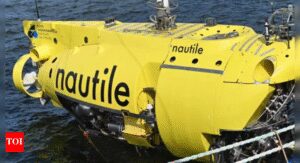The Challenges and Opportunities of Managing Modern Server Ecosystems
In the digital age, server ecosystems form the backbone of nearly every organization, enabling the seamless delivery of applications, services, and data. As technology evolves, so too do the complexities of managing these ecosystems. Modern server environments are no longer confined to on-premises data centers but span across hybrid, multi-cloud, and edge computing architectures. This transformation has introduced both challenges and opportunities for IT teams, requiring them to adapt to new paradigms while ensuring reliability, scalability, and security.
The Challenges of Managing Modern Server Ecosystems
Complexity of Hybrid and Multi-Cloud Environments
The shift to hybrid and multi-cloud architectures has introduced significant complexity. Organizations now manage servers across on-premises data centers, public clouds, and private clouds, each with its own set of tools, APIs, and management interfaces. This fragmentation makes it difficult to maintain visibility, enforce consistent policies, and optimize resource utilization.Security and Compliance Risks
As server ecosystems expand, so do the attack surfaces. Cyber threats are becoming increasingly sophisticated, targeting vulnerabilities in both on-premises and cloud environments. Managing security across diverse infrastructures requires robust identity and access management, encryption, and continuous monitoring. Additionally, organizations must navigate a labyrinth of compliance requirements, which vary by industry and geography.Scalability and Performance Demands
Modern applications demand high availability, low latency, and scalability to handle unpredictable workloads. Ensuring optimal performance across distributed server ecosystems is a daunting task, especially when dealing with legacy systems that may not integrate well with newer technologies.Resource Optimization and Cost Management
With the proliferation of cloud services, organizations often face challenges in controlling costs. Over-provisioning, underutilization, and a lack of visibility into cloud spending can lead to budget overruns. IT teams must strike a balance between performance and cost efficiency while managing resources across multiple platforms.- Skills Gap and Workforce Challenges
The rapid evolution of server technologies has created a skills gap in the workforce. IT professionals must continuously upskill to keep pace with emerging tools and practices, such as containerization, serverless computing, and infrastructure-as-code (IaC). This demand for expertise can strain organizations, particularly smaller ones with limited resources.
The Opportunities of Managing Modern Server Ecosystems
Unified Management Platforms
To address the complexity of hybrid and multi-cloud environments, vendors are developing unified management platforms that provide centralized control and visibility. Tools like VMware Tanzu, Red Hat OpenShift, and Microsoft Azure Arc enable organizations to manage servers, containers, and applications across diverse environments from a single interface.Automation and AI-Driven Operations
Automation is a game-changer in modern server management. By leveraging infrastructure-as-code (IaC), organizations can provision and configure servers programmatically, reducing manual errors and accelerating deployment. Additionally, AI-driven operations (AIOps) tools use machine learning to analyze data, predict issues, and automate remediation, enhancing reliability and efficiency.Edge Computing and Distributed Architectures
The rise of edge computing presents an opportunity to reduce latency and improve user experiences by processing data closer to the source. Distributed server ecosystems allow organizations to deploy applications and services at the edge, enabling real-time decision-making and supporting use cases like IoT, autonomous vehicles, and smart cities.Cost Optimization Strategies
Cloud cost management tools and practices, such as FinOps, empower organizations to optimize spending. By analyzing usage patterns, leveraging reserved instances, and implementing auto-scaling, businesses can achieve cost efficiency without compromising performance.Enhanced Security Posture
Modern server ecosystems benefit from advancements in security technologies. Zero-trust architectures, encryption-at-rest and in-transit, and advanced threat detection systems help organizations protect their data and applications. Additionally, cloud providers offer built-in security features and compliance certifications, simplifying adherence to regulatory requirements.- Upskilling and Workforce Development
The demand for skilled IT professionals has spurred investment in training and certification programs. Organizations can partner with educational institutions, leverage online learning platforms, and implement internal training initiatives to build a workforce capable of managing modern server ecosystems.
Conclusion
Managing modern server ecosystems is a multifaceted endeavor that requires organizations to navigate challenges while embracing opportunities. The complexity of hybrid and multi-cloud environments, security risks, scalability demands, and cost pressures can be daunting. However, unified management platforms, automation, edge computing, and AI-driven operations offer powerful tools to overcome these hurdles. By investing in upskilling and adopting innovative strategies, organizations can build resilient, efficient, and secure server ecosystems that drive business success in the digital era. The key lies in staying agile, leveraging the right technologies, and fostering a culture of continuous learning and adaptation.













